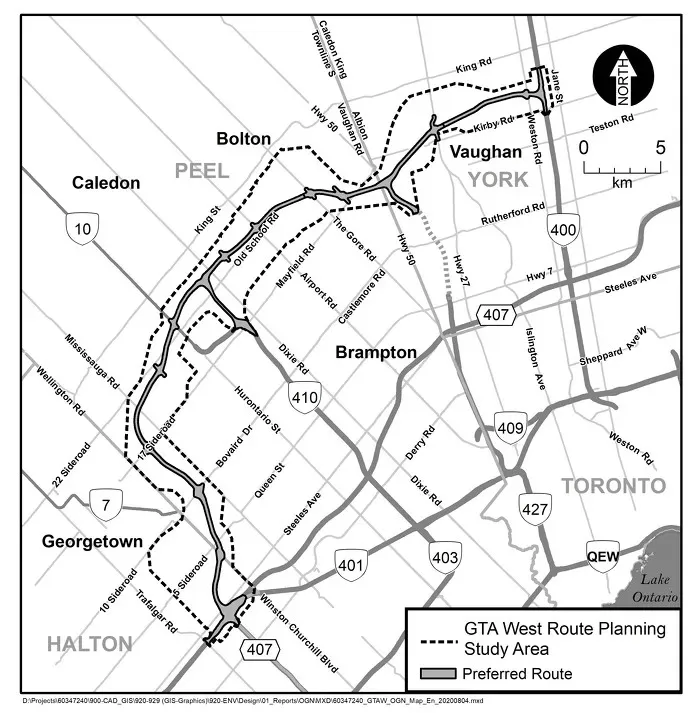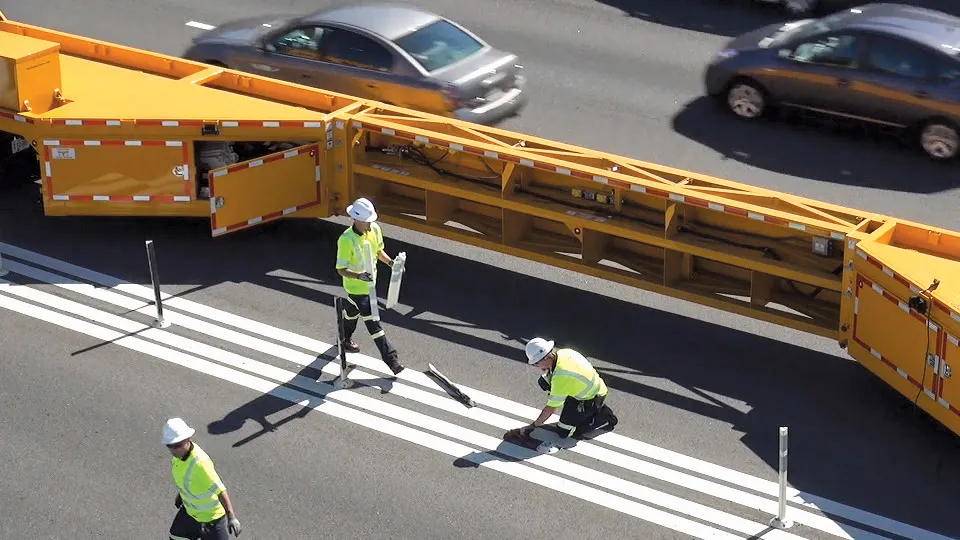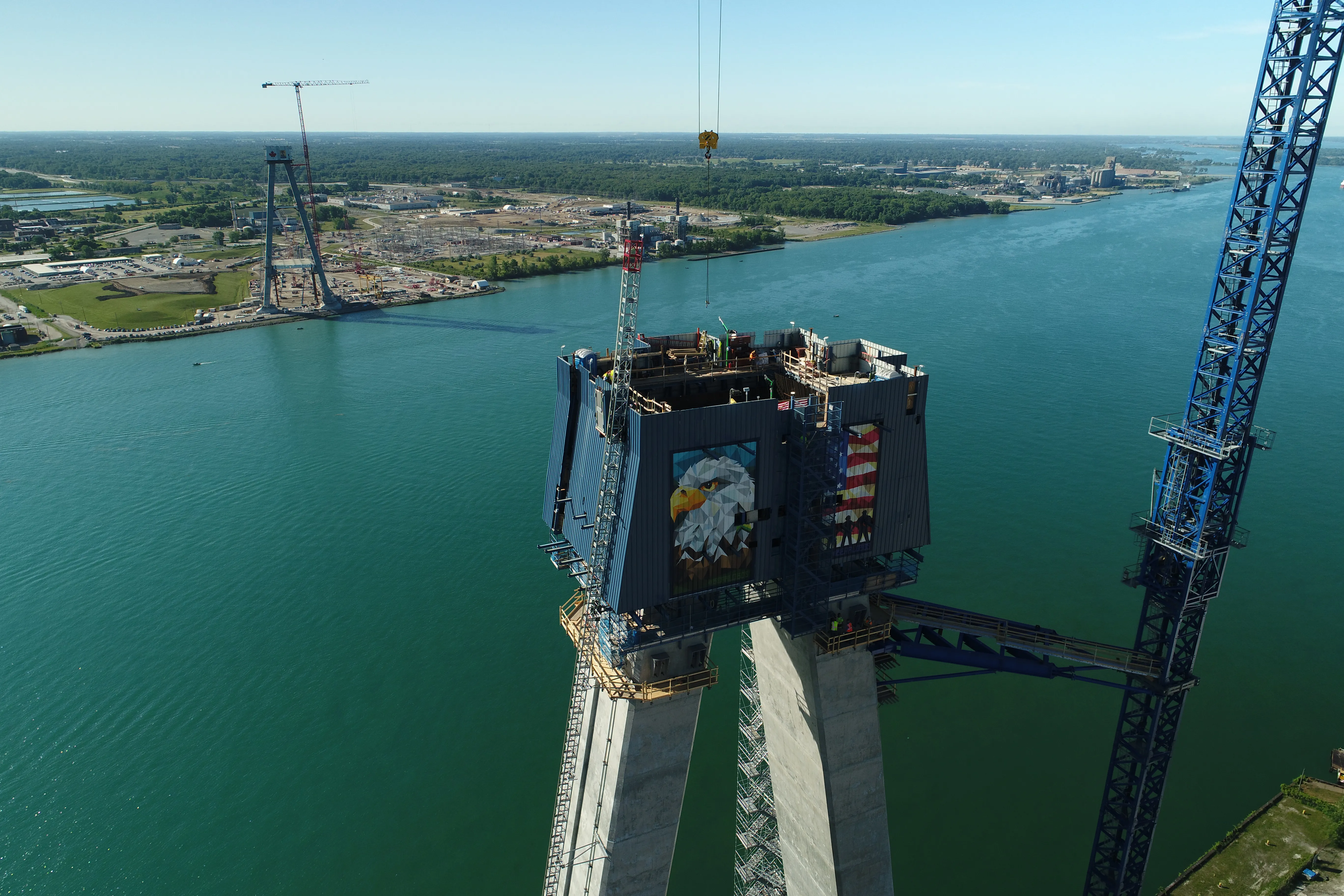
The Ontario government is closing in on a construction start date in the coming weeks for Highway 413, a planned expressway just east of Toronto.
According to media reports and the provincial government, the remaining land acquisitions are now taking place for what will be a 52km multi-lane route through protected greenbelt areas in the northwestern parts of the Greater Toronto Area. Originally called the GTA West Corridor, it is essentially an outer orbital beltway around the built-up areas of the towns of Brampton and Vaughan that would permit traffic traveling between Southwestern Ontario and Ontario's cottage country or northern Ontario to avoid Toronto-focused traffic.
Ontario Premier Doug Ford and his Progressive Conservative provincial government have been trying to construct the highway since they were first elected in 2018. In its 2025 budget, released in mid-May 2025, the Ontario government said 500 properties will need to be acquired by the province to construct Highway 413.
The project includes a 4km extension to Highway 410 and a 3km extension to Highway 427 for a total of 59km of new highway. Highway 413 will have 11 interchanges at municipal roads and features such as service centres, carpool lots, truck inspection stations and the potential for electric vehicle charging stations. A transitway will be a separate corridor running alongside the highway, dedicated for public transit, which will be subject to a separate Environmental Assessment.
The 400-series highways are a network of controlled-access highways forming a special subset of the provincial highway system. They are similar to the Interstate Highway System in the US and are regulated by the provincial Ministry of Transportation of Ontario.
By design, the 400-series highways have a minimum 4 lanes and can have up to 10 lanes, with interchanges generally at least 1.5km apart in urban areas. In rural areas, interchanges tend to be spaced at least 3km apart, although exceptions exist. When the cross-section of highway is larger than 10 lanes, the road is usually arranged into a local–express lane system, which exist on sections of Highways 400, 401, 403, 404 and 427.
In April last year, the Ontario government reached an agreement with the federal government for the project to proceed with strong environmental protections in place. Meanwhile, the province started fieldwork, including borehole drilling and engineering, to evaluate soil composition and bedrock depth.
But the project has been criticised by Canadian environmental groups. In 2020 they released a report that Highway 413 would be a "poor use" of US$4.6 billion.








